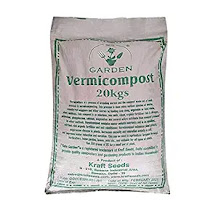Cultivating Blooms: A Guide to Increasing Flowering in Your Jasmine Plants
Introduction:
Jasmine plants are renowned for
their fragrant and delicate flowers, adding a touch of beauty and elegance to
any garden or indoor space. If you're a jasmine enthusiast looking to enhance
the blooming of your plant, you're in the right place. In this guide, we'll
explore effective techniques and tips to help you maximize the flowering
potential of your jasmine plant.
Choose the Right Jasmine Variety: Not all
jasmine varieties are created equal when it comes to flowering. Select a
cultivar that is well-suited to your climate and environmental conditions.
Common varieties like Jasminum officinale (Common Jasmine) or Jasminum sambac
(Arabian Jasmine) are popular choices known for their abundant blooms.
Optimal Planting Conditions: Ensure
your jasmine plant is planted in well-draining soil with a slightly acidic to
neutral pH. Adequate sunlight is crucial for flowering, so plant your jasmine
in a location where it receives at least 6-8 hours of sunlight daily. If you're
growing jasmine indoors, place it near a south or west-facing window to
maximize light exposure.
Proper Watering: While
jasmine plants prefer slightly moist soil, they do not tolerate waterlogged
conditions. Overwatering can lead to root rot and hinder flowering. Allow the
soil to dry out slightly between watering sessions, and be cautious not to let
the soil stay consistently soggy.
Feeding and Fertilization: Jasmine
plants benefit from regular feeding during the growing season (spring and
summer). Use a balanced, water-soluble fertilizer formulated for flowering
plants. Apply the fertilizer every 4-6 weeks to provide the essential nutrients
needed for robust growth and prolific flowering.
Some Fertilizer Suggestions Here :
Before purchasing any
fertilizer, it's essential to check the product details, including the nutrient
ratios, application instructions, and customer reviews. Additionally, consider
the specific needs of your jasmine plant, such as whether it's potted or planted
in the ground, and choose a fertilizer that aligns with those requirements.
Always follow the recommended dosage instructions to avoid over-fertilizing,
which can be harmful to plants.



(Click The Image To Check the Fertilizer Details in Amazon.com)
(Click The Image To Check the Fertilizer Details in Amazon.in)
Pruning for Shape and Encouraging
Blooms: Pruning is a key element in stimulating jasmine to produce
more flowers. Trim your jasmine plant regularly to maintain its shape and
remove dead or unhealthy growth. Additionally, pinch back the tips of the
branches to encourage lateral growth, resulting in more flowering sites.
Support Structures: Provide
appropriate support structures like trellises or arbors for climbing jasmine
varieties. This not only enhances the aesthetic appeal but also encourages
upward growth and increased flowering. Regularly train the vines to climb the
support, creating a lush and blooming display.
Pest and Disease Management: Keep a
close eye on your jasmine plant for any signs of pests or diseases. Aphids,
mites, and fungal infections can hamper flowering. Treat issues promptly with
organic or chemical solutions as needed, ensuring the overall health of the
plant.
Temperature Considerations: Jasmine
plants thrive in warm temperatures. If you're cultivating jasmine in a cooler
climate, consider planting it in a pot that can be brought indoors during
colder months. Maintaining a consistently warm environment is essential for
continuous flowering.
Conclusion:
By implementing these tips and
techniques, you can create an ideal environment for your jasmine plant to
flourish and produce an abundance of beautiful flowers. Patience and consistent
care are key, so observe your plant closely, adjust your practices as needed,
and enjoy the aromatic rewards of a healthy and blooming jasmine. Happy
gardening!
Check Shop in Amazon.com Check Shop in Amazon.in





.png)
Comments
Post a Comment